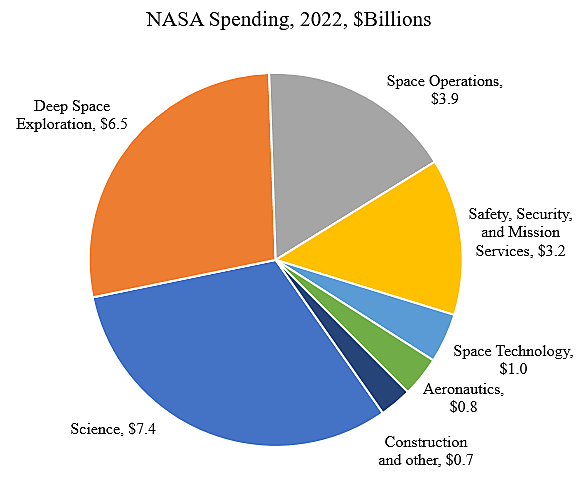In a May 1788 letter, Thomas Jefferson observed, “The natural progress of things is for liberty to yield, and government to gain ground.” I’m not sure whether that is true, but I do know that when the private sector gains ground, the government should yield.
That’s what I thought of when reading a Wall Street Journal review by James Meigs of “The End of Astronauts: Why Robots Are the Future of Exploration” by Donald Goldsmith and Martin Rees. Meigs summarizes the book’s theme: “in almost all cases, space exploration is too important to leave to fallible, vulnerable human beings” because “almost anything humans can do, robots can do faster, cheaper and—increasingly—better.” Thus, it appears that we should send robots on space missions, not humans.
The cost differences are huge. Meigs says that the Perseverance rover that landed on Mars in 2021 is currently roaming around, seeking life, drilling rock samples, and collecting useful data. The mission cost $2.75 billion. But a “human base on Mars would require life support, shielding from solar and cosmic radiation, and more. According to one estimate, just getting astronauts into orbit around Mars would cost more than $100 billion.”
Goldsmith and Rees mainly focus on government space programs. NASA could pursue dozens of robotic missions for the cost of a single human mission. But Meigs reminds us that wealthy entrepreneurs have made great advances recently with private space efforts. Elon Musk, Jeff Bezos, Richard Branson, and others have grand plans for space tourism and other private space projects. Meigs cites one estimate that private investors pumped $15 billion into space-related startups in 2021. Musk and others are partly feeding off of NASA’s budget, but they’ve also put in a lot of their own money.
Given the large ambitions for private human space flight, isn’t it time to phase out NASA’s human missions? The private sector has gained ground, and so the government should yield. The private sector has shown that it can do space flights far cheaper than NASA. NASA’s cost overruns are infamous. The cost of building the International Space Station ballooned from $17 billion to $74 billion.
The chart below shows the breakdown of NASA’s $23.4 billion budget for 2022. The human mission portions are $6.5 billion for Deep Space Exploration and $3.9 billion for Space Operations, which together are 44 percent of NASA’s budget. Robotic missions are funded within the Science portion of the budget. I understand that other NASA budget activities—such as safety, security, technology, and construction—provide support for both human and robotic missions. Finally, note that NASA’s activities are for civilian purposes, while military space activities are funded through the Space Force and other agencies. Space Force spending is about $20 billion a year. Basic NASA budget data is here.
Given the need to reduce large budget deficits, most federal agencies should be cut. For NASA, policymakers should consider phasing out the human missions and narrowing the agency’s focus to more efficient robotic missions. Robots have come a long way since humans took that one small step in 1969.

